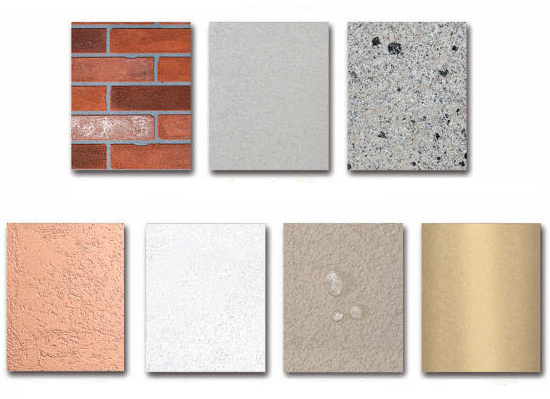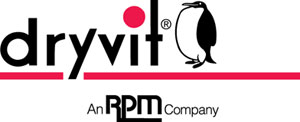EIFS - Performance Beyond Code Compliance
Specifying Design Options in EIFS
When specifying EIFS there are certain specification details to pay attention to so that the right products are specified appropriate to the location where they will be installed. The Master Format section number commonly used is in the 07 24 00 series for several types of Exterior Insulation and Finish Systems. These include separate specifications for Polymer-Based (PB) Barrier EIFS, Water-Drainage EIFS, and Direct Applied Finish Systems. Some of the relevant items to address in a standard 3-part specification format are highlighted below.
Part 1: General
• Quality Assurance – Since EIFS have been in use for over four decades, there are an abundance of tests and standards that have been applied to and developed for various types of EIFS. In fact some have noted that EIFS are the most thoroughly tested exterior cladding on the market. We have highlighted some of the major tests in this article already, but each project should be reviewed for additional applicable tests and standards as they may apply to a particular type of system or a particular location.
• Submittals – Some submittals can be requested during the design review stage of a project or they can be reviewed during construction. Common submittals might include product data, samples, and test reports on the total EIFS. In cases of panelized construction, it would be appropriate to request shop drawings for the panelized system. A mock-up of the system including typical detailing and sealant joint application may also be appropriate.
• Coordination – Since the EIFS will be applied to a substrate and integrated into wall components installed by others it is important that the substrate and contiguous wall components are specified, installed, and coordinated so that the entire wall assembly works together similar to specifying other veneers and claddings. It is strongly recommended that the General Contractor schedules an EIFS pre-installation/coordination conference on site including all subcontractors involved in exterior envelope materials that meet or terminate at the EIFS. This conference usually occurs about the time the exterior sheathing is completed in its entirety.
• Warranty – Competitive warranties should be carefully reviewed. It is reasonable to request a warranty based on a comprehensive single source for any material defects and labor to replace any such material defects along with aspects of fade performance and no depreciation for the term of the warranty. For EIFS with drainage it is also reasonable to specify that the warranty covers underlying damage to framing or sheathing for moisture intrusion as a result of any material defect.
Part 2: Products
• Products – Since EIFS are entirely code compliant and warranted, it will be important to specify that all materials, products, and accessories come from the same source. As with all systems, there are options and choices among manufactured products. Perhaps the most significant in regard to thermal performance will be the choice of insulation type since various open and closed cell foam insulation boards are available with differing thermal and permeability properties. Generally speaking, open cell insulation which is most widely specified is lighter, more permeable, and less costly, but has a slightly lower R-value per inch than closed cell insulation boards. There are also choices in regard to the type and strength of fiberglass reinforcing mesh that is used in the system. The appropriate mesh can be specified for the anticipated conditions ranging from a standard impact condition up to the ability to resist hurricane force high impact through multiple layers of reinforcing mesh and provide long term durability. Consult manufacturers to see the properties of the products that they provide.
 |
EIFS finish options can be specified in a wide range of choices including brick, stucco, granite, and even metal appearances. |
• Finishes – This is an area that has evolved notably in recent years. Finish options now include a wide range of appearances and include the look of stucco, brick, limestone, granite, and even metal in virtually any color. Naturally there will be differences between manufacturers on this, so it will be important to consult manufacturers' literature early in the design process to determine the options available.
Part 3: Execution
• Examination and Preparation – All work provided by other trades including the substrates, flashings, general building waterproofing, roof/wall connections, etc. must be examined to be sure they are all in place and installed properly. This examination and coordination should all be part of the pre-installation conference noted above. Missing this step could cause unwanted water or weather to penetrate behind the EIFS and compromise the building. Once all work is found acceptable, then the substrate should be prepared to be flat and free from anything that could inhibit proper direct adhesion or application of the AWRB.
• Installation and Field Quality Control – Since EIFS are installed in the field—except for panelized assemblies, it is extremely important that qualified and trained installers perform the work. Including appropriate installer requirements in this part of the specification is very appropriate but should likely be done in consultation with manufacturers to understand the current training and any certification status within the industry. It should be noted that the IBC requires an inspection of the AWRB layer in an EIFS with Moisture Drainage system by either the design professional of record or a third party inspector firm. Consideration for independent third party inspection of the entire building envelope is also an excellent idea.
• Cleaning and Protection – Most EIFS clean easily following installation in accordance with manufacturer's instructions. The finished system should be protected from weather and any sources of damage until the system is dry and any remaining flashings, sealants, etc. are installed.
Conclusion
Meeting code requirements for ci, air leakage, continuous air barriers, and condensation protection through the use of Exterior Insulated Finish Systems provides many distinct advantages to traditional construction techniques. As presented, EIFS as ci systems eliminate thermal bridging and meet or exceed all current building, energy and fire performance code requirements. As coordinated systems they enhance envelope energy efficiency, reduce energy consumption, control air and moisture infiltration, and protect the exterior wall assembly from vapor condensation. All of these attributes support sustainable design and earning LEED credits in a green building. Perhaps equally important in many cases, EIFS provide freedom of architectural styles in that they support many alternative finish aesthetics. And compared to other options that require more weight, more labor, and more trades, EIFS can notably reduce construction cost.
These benefits of EIFS have been realized in hundreds of thousands of projects around the world using systems that provide a single-source, seamless and sustainable cladding solutions for buildings of any shape, size and type. Simply put, the latest EIFS provide everything needed from a building code and ci perspective. They can also now provide everything desired from a performance and aesthetic standpoint to create buildings that will perform and look good for years to come.
 |
Outsulation® by Dryvit is a fully tested, code-compliant EIFS, providing an air/water-resistive barrier, exterior CI, and durable finishes to buildings worldwide. Outsulation offers lower construction costs, improved energy efficiency, and long-term sustainability compared to other exterior walls. The final appearance can look like brick, stucco, metal, granite, and limestone. www.dryvit.com |








